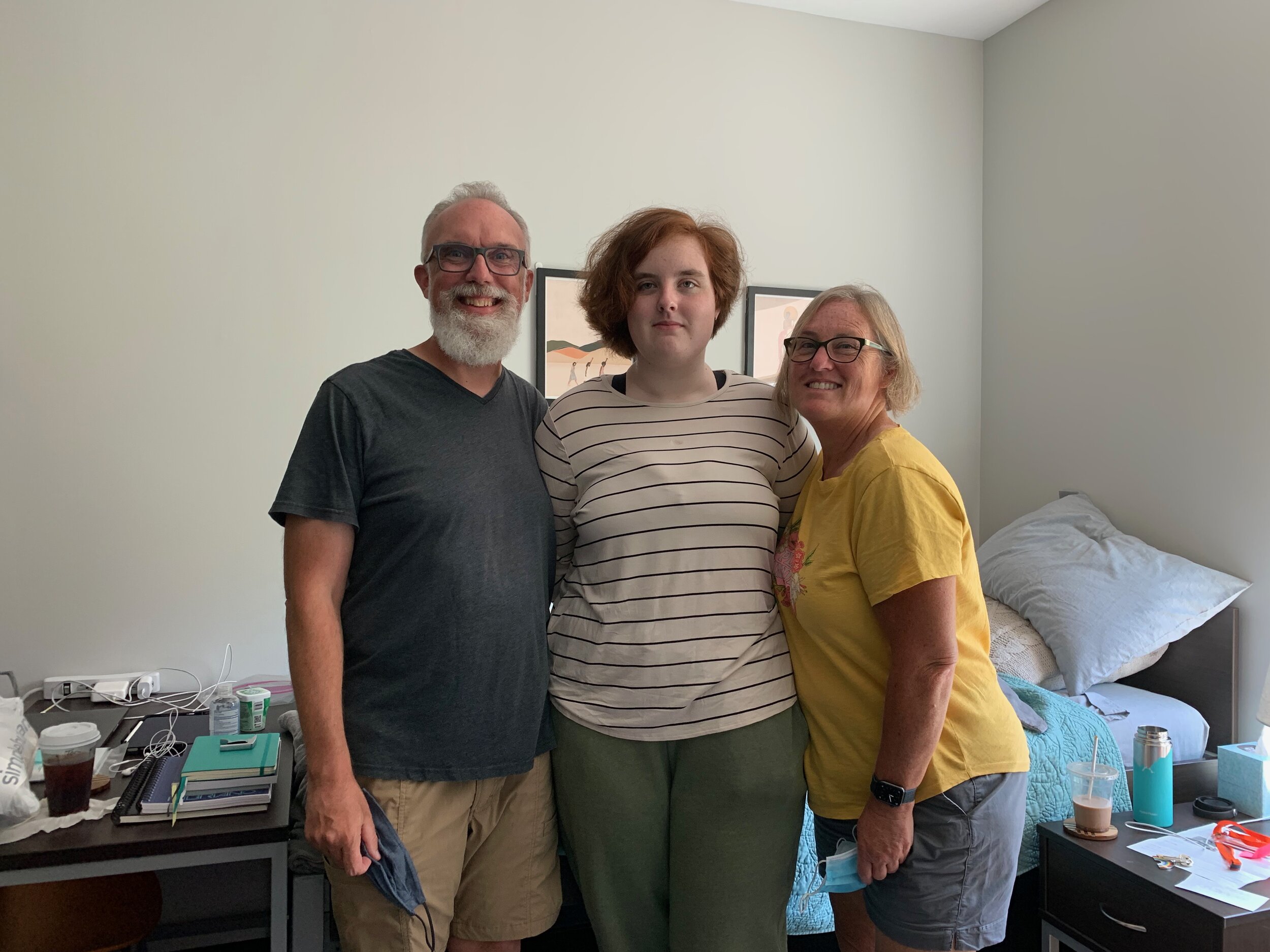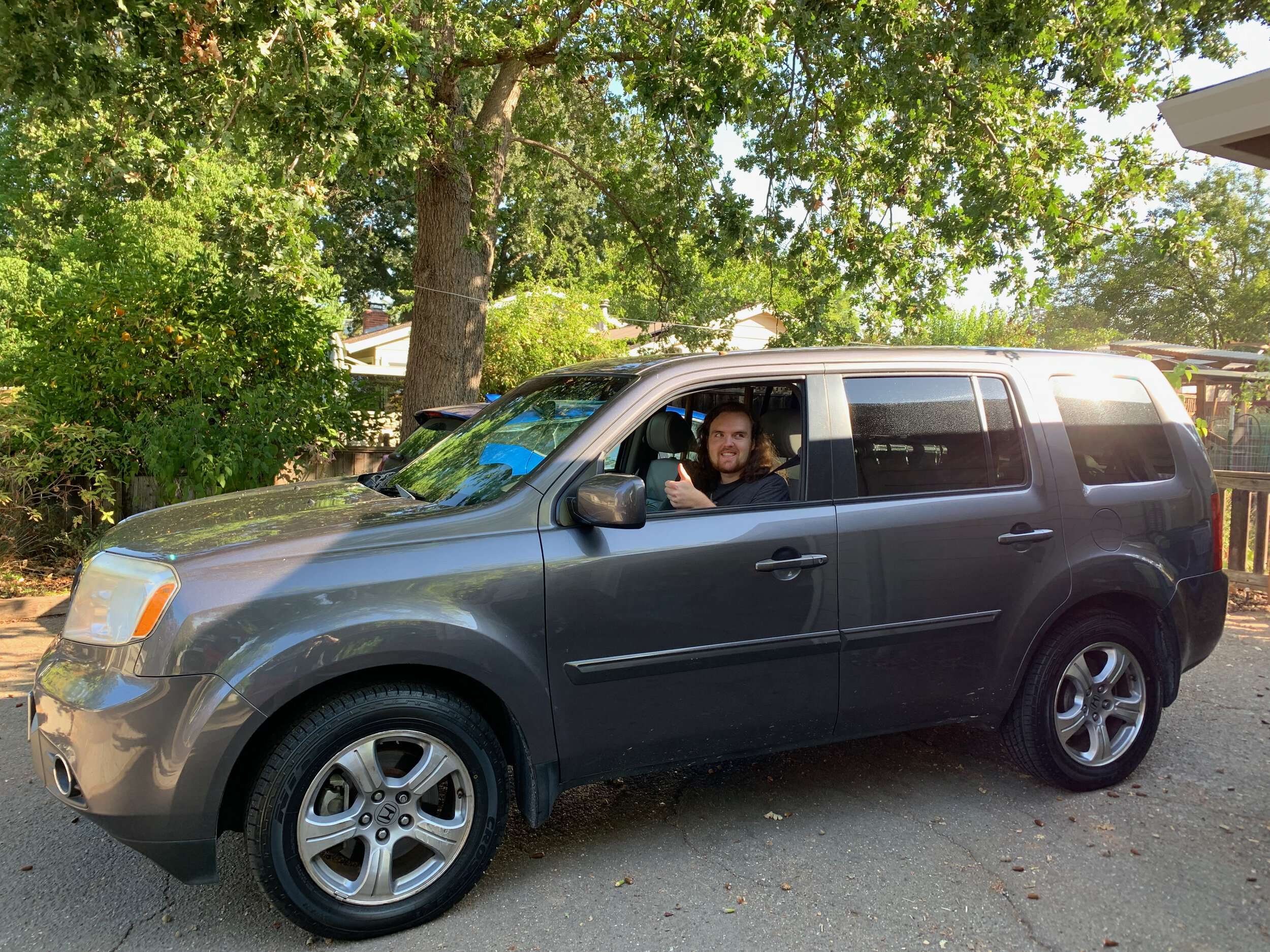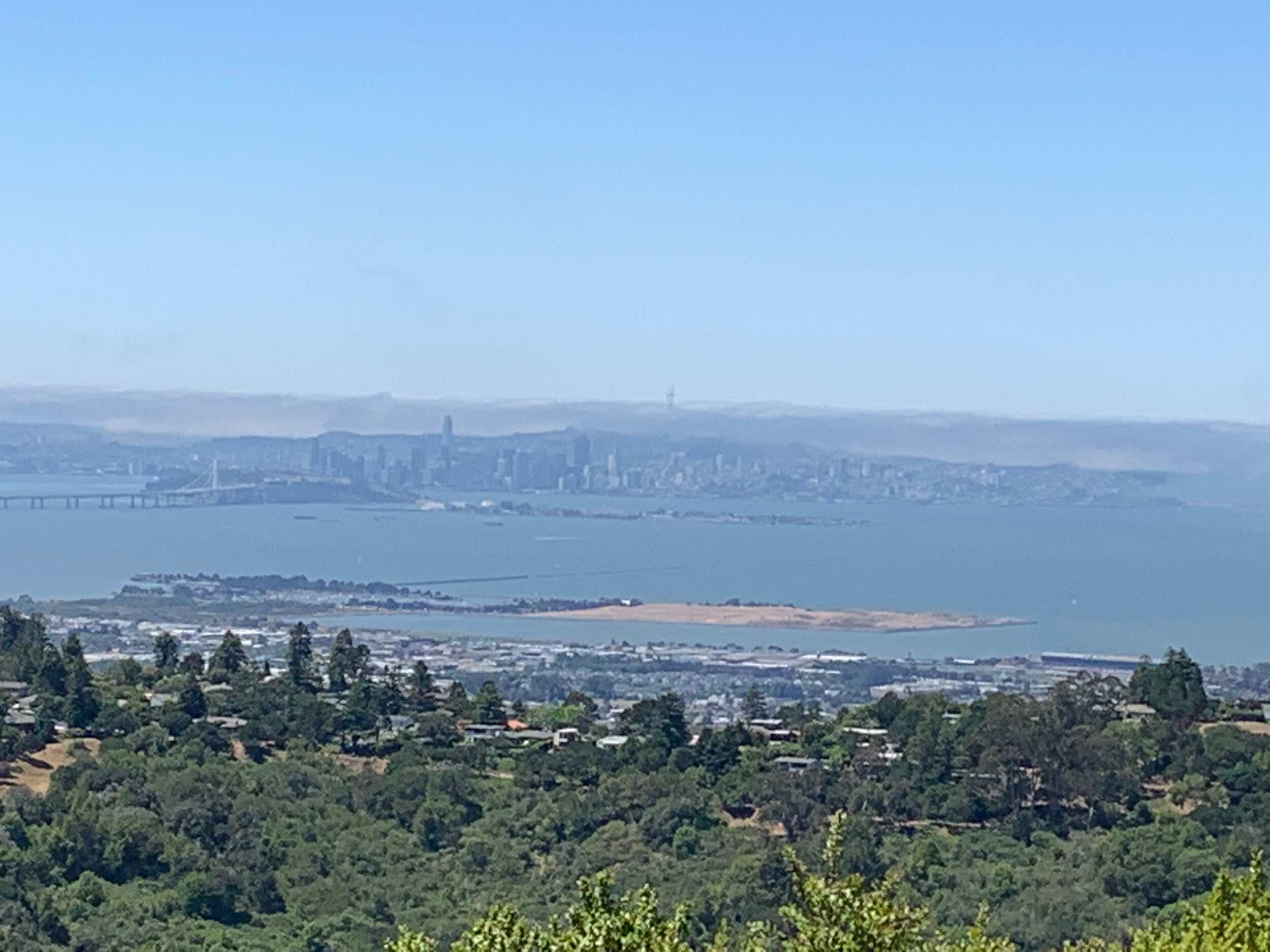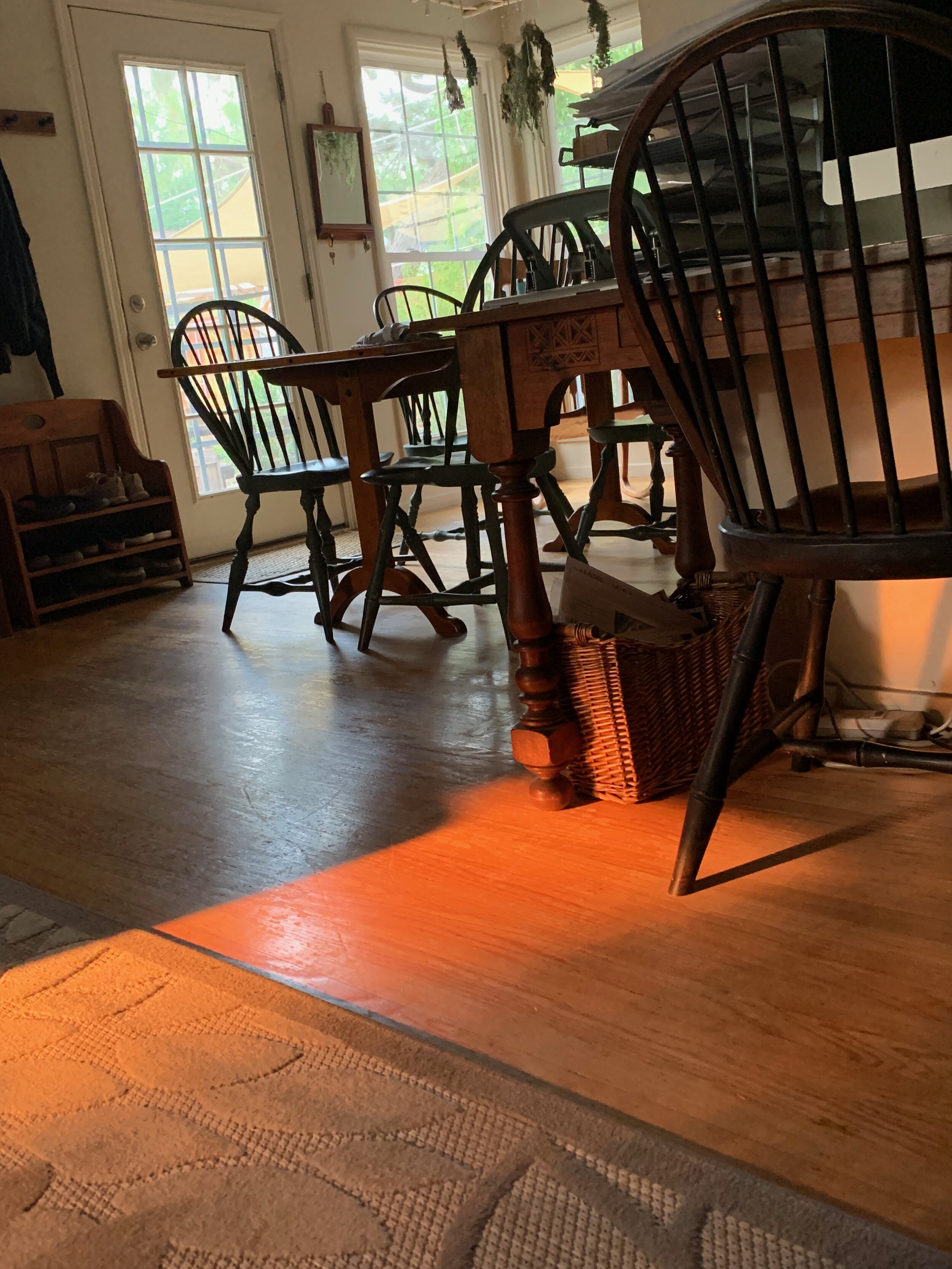This is the organization with which I am working at the moment, and this is their big annual native plant sale. One great way to garden for the future is to plant native species; they require less water, they support native pollinators, and they help give our gardens a sense of place. Let me know if you have any questions about the plants that are available for sale this year (though the website has a lot of helpful plant details already). I will be there loading orders into cars on Halloween! Hope to see you there.
We Are Alone
There’s a scene in Harry Potter and the Deathly Hallows where Harry, Ron, and Hermione suddenly disapparate (i.e. teleport) from London to a safe house (12 Grimmald Place) in order to escape the Death Eaters sent to kill them. Upon entering the residence, a ghostly Mad-Eye Moody (who is dead) rushes toward them, a sort of security measure he put in place before his death to protect the house. This is an unwelcome and scary surprise, so Hermione performs a spell (Revelio) to determine if there are any other frightening surprises (or persons) in the house. Nothing appears. The three teenagers stand in the entrance hall, which seems dark and menacing rather than the safe place it’s meant to be; the long dusty hall (and the unknown future) stretches in front of them. Hermione says, “We’re alone.” No one is there to help them. They are on their own, in an uncertain world.
That scene has been playing over and over in my mind these last few weeks, as Tom and I first traveled to Georgia to install our youngest, Rin, in their freshman year at Savannah College of Art and Design, and then again upon coming home, where we watched our eldest, Adam, pack up the car and drive off to begin his sophomore year at Cal Poly in San Luis Obispo.
Since then, Tom and I have had trouble concentrating on work and school - well, on life, basically. Sure, we are a bit sad (we miss them both quite a lot), but we are also happy, as we have become (as my brother-in-law Andy assures me) “Successful Adult Launch Facilitators.” We’re worried, and we’re proud, and we’re hopeful. We are also curious to discover who we are as a couple, after twenty years of sharing our home with children. In short, we are feeling everything all at once.
Being of a certain age, lots of our friends are going through the same changes, and it’s been interesting to hear the various reactions. Some have reported feeling utterly liberated and free; others write of evenings spent crying on their child’s empty bed. We are somewhere in the middle - not delighted, but not bereft. We are, quite simply, alone. It will take some time for us to adjust to these new circumstances.
All the Trails
We’ve always been a family of hikers and walkers, but since the pandemic began, our daily excursions have become quite sacred to us, whether in our neighborhood (blessed by many regional open spaces with great hilly walks) or in the greater Bay Area. We have been using an app called Gaia in the last year, which records our walks, and also shows us the many trails we have yet to travel (the free version is great). This has allowed us to find trails that we didn’t even know existed, and especially on weekends, we tend to go further afield to find new favorites.
One thing that has become so clear to us is that the Bay Area is littered with extensive trail systems, some maintained by local park systems, and some by state parks or even national parks. These are all non-profit groups, often dependent on volunteers to establish or maintain trails. We are so thankful for all of these organizations, and all the people, who make this kind of recreation possible.
We have long been supporters of East Bay Regional Parks. Many of these parks are free to enter, but supporting them by purchasing an annual pass is great. Individual memberships run $60 for a year (the price of three movies, or 10 fancy coffees). A family membership is $105. The wonderful thing about EBRP is that they have an extensive system which includes urban trails and parks, as well as more suburban parks. This promotes equity in the outdoors and makes these open spaces accessible to everyone, which is something that is really necessary.
EBRP also oversees two of the longer, linked trail systems we often find ourselves using. The California Riding and Hiking Trail is mainly a Contra Costa County trail system that links Mt. Diablo with Martinez, and will encompass 16 miles of trail. The Martinez-Concord section is already completed and will link to Mt. Diablo State Park in the future. The East Bay Skyline National Trail is part of the 1968 National Trail Systems Act. It begins at the Alvarado staging area in Richmond, and ends at the Proctor Gate station in Anthony Chabot regional park. We’ve hiked most of both of these trails and have found them quite interesting.
Other local trail systems include the scenic San Francisco Bay Trail, which is a planned 500 mile walking and cycling path around the entire bay, going through all nine counties, 47 cities, and seven major bridges. 350 miles are already in place. This project is also restoring wetlands around the Bay. They have a really cool navigational map that shows existing trails (whether paved or dirt) and planned trails. We’ve walked much of this trail system, too, including two bridges, and always enjoy these walks on days when it’s prohibitively hot in our neighborhood and we need the cooling influence of the Bay. The Bay trails are often flat, as well, offering an easier but longer walk, and there is always good wildlife viewing with shorebirds.
The Bay Area Ridge Trail, however, offers a completely different kind of hiking experience, taking walkers over the peaks that ring the Bay. This trail was the vision of William Penn Mott, Jr, who was Director of our National Park Service as well as EBRP and California State Parks. He wanted a 550 mile trail encircling the ridges of the Bay Area. 393 miles of trail have been established and they are all great, challenging miles! They have some neat trail maps and tools which include ‘curated’ trail adventures such as wheelchair accessible loops, or training ridge to bridge trails for those who want a challenge.
There is an interesting state trail system that we are just recently learning more about. This is the Mokelumne Coast-to-Crest Trail, which is planned to go all the way from the Bay to Yosemite. Currently three sections are complete: the East Bay/Contra Costa County section, the Camanche-Pardee Reservoir section, and the Upper Mokelumne River Canyon section. We have been on the Contra Costa section many times, as it winds through and over Mt. Diablo, Black Diamond, and Contra Loma parks. We are hoping to eventually get to the sections east of here and explore those, as well.
There are two interesting interstate trails here, one being (of course!) the Pacific Crest Trail, which runs from the Mexican border to the Canadian border, through California, Oregon, and Washington. We have been on a very short section of this trail when hiking in Yosemite, but other than that, this trail has been beyond our reach, as it runs through the interior mountain ranges and is primarily in wilderness. It has long been a dream of mine to hike this trail, and maybe we’ll have more time in the future to section hike portions of it, at least.
Another interstate trail which I have just recently discovered is the Juan Bautista de Anza trail, which is part of the National Park System and is a National Historic Trail. It runs through Arizona and California, following Juan Bautista de Anza’s route in 1775 as he established (colonized?) a settlement in San Francisco bay. I don’t know how much we should be celebrating the takeover of land from California Native Americans, but while we don’t need to honor questionable historic activity, we should certainly learn about it and face the truth of it, and what better way to do that then to walk those same paths?
The final trail that I want to bring to your attention is the American Discovery Trail, which runs from the West Coast to the East Coast, 6800+ miles of continuous multi-use track. It does run on some roads, but the organization is working to make the trail completely off-road in the future. It is not a wilderness trail, like the Pacific Crest Trail. It passes through cities, towns, farmland, and wild areas. It is meant to be a voyage of discovery of our country as a whole. On the website, you can find the trails in your state (if it passes through your state); the California portion starts in Pt. Reyes National Seashore, and goes right over Mt. Diablo, over to Lake Tahoe, so we’ve found ourselves on this trail many times.
We are lucky to live in the San Francisco Bay Area, a place that celebrates outdoor living year-round. That doesn’t mean the conditions are always idyllic (see my previous post), but it does mean that we are provided with a lot of opportunity to get out into nature, and explore. We have come to realize that this is extremely important to us, and it will dictate how we move forward into retirement (which isn’t happening anytime soon, but that doesn’t mean we don’t think about it). We don’t necessarily see ourselves living in California forever, but we do want to live in a place that offers a lot of outdoor recreation, no matter the season. That might mean that we need to get good at snowshoeing! But that’s years in the future, anyway. Right now, we are just happy to have plenty of adventures located right outside our front door.
PS: If you like to hike and get outdoors, and you’re looking for a new adventure, let me know - Tom and I have plenty of suggestions for great walks all over the Bay Area!
These Strange Red Days
Well, here we go again.
The Dixie Fire (to our north) is now the 3rd largest fire ever in California. We feel terrible for anyone who has had to be evacuated, or lost their home.
Here in the Bay Area, the smoke has finally begun to affect our air quality. Yesterday, we logged in to Purple Air for the first time in 2021. It was necessary, because we could both see and smell smoke. Sure enough, our AQI was quite poor. This means shutting the doors and staying inside as much as possible. It also means that the strange red and grey skies are back.
The light in the house yesterday afternoon was eerie.
And sunsets/sunrises are also different. Beautiful, but not for the right reasons.
The problem with fire here is enormous and won’t be easily solved. I wrote a paper for my summer class that I thought might interest you; the prompt was that we write our paper as a historian, who is asked to consult on a modern environmental issue. I wrote about wildfire. None of this information is new, but I learned a lot by looking at it from a historical perspective, and maybe you will too.
Consistency
The North Garden, which counterintuitively gets the most intense, direct afternoon sun. Note the new shade cloth above.
The South Garden, which (also counterintuitively) gets mostly morning sun, due to middle-day shading from large trees.
According to the Oxford Dictionary, consistency is “conformity in the application of something, typically that which is necessary for the sake of logic, accuracy, or fairness.”
Consistency is something with which we struggle in our garden, even in normal years.
But what is a normal year? We haven’t had one of those for a long time now. We in the outer SF East Bay have experienced wide temperature swings. For example, last Saturday, according to our weather station, the high was 112.8 degrees (F) in our North Garden at 2:45 pm; by Wednesday morning at 6:15 am it was 53.8. it’s normal to get cool here at night due to the influence of the Pacific Ocean, but a 59 degree difference is extreme even by our standards.
And rain? Well, I’m sure you’ve heard about the lack of it; here in Walnut Creek, our local city weather station has recorded 5.98 inches this year. For comparison’s sake, let’s look at Springfield, Missouri, a city a friend of mine lives in. He’s been dismayed by the amount of rain they’ve had this year, but in actuality, it’s five inches less than in “normal years” - 2021 has recorded a total of 31.8 inches since January 1. We won’t get rain again until November, if we are lucky. Springfield will have regular rain through the rest of the year.
Living in a Mediterranean climate, we expect less rain. But we do expect about 3-4 times the amount we’ve had this year.
The combination of these heat and precipitation inconsistencies has resulted in a pretty terrible die-off in our food garden.
Dead pepper
Dead tomato
Blossom end rot. It’s on every single one of my tomatoes, regardless of variety. This is because when it’s over 100 degrees, I water them twice a day instead of just once, and tomatoes like consistent water. But otherwise they would have all died, and I just couldn’t let that happen.
Crispy hop bines
Crispy blueberry bushes
This last image is from drought.gov which is updated every Thursday. In the Bay Area, we are now in Exceptional Drought conditions. Our governor has asked for a 15% voluntary water reduction from all residents (I’m not sure what companies have been asked to do). As a family, we had to have a discussion: Which water will we give up? We’re pretty good about our consumption in the house - we have only one toilet, and it’s low-flow; we have one shower, and we’re good about keeping our time in there short; we have a dishwasher and it’s energy-and-water-efficient (which saves a ton of water over hand-washing); and our laundry washer is a tiny front-loader, which uses a lot less water. Our one big water ‘expense’ is the garden.
Unable or unwilling to let the garden die after investing work and expense to establish it, we decided that our first plan of attack would be toilet flushing. If we “let the yellow mellow” and “flush only the brown down,” we can save the 15% that has been asked of us. It’s an easy fix…. for NOW. Soon, we are going to be asked to reduce even more, and then, well, I’m going to have to make some hard decisions.
I have noticed that many things in the garden are doing well, despite the inconsistencies, and it’s no surprise which ones.
Basil, and other Mediterranean herbs
Pumpkins
Winter squashes
Native plants, like Toyon…
… and manzanita
Despite the fact that I believe I’m saving the state water by growing my own food rather than buying it at the store (consider the amount of water farms use, the amount of energy used to get the food to the store, the amount of energy I use to get myself to the store), I am now convicted that I cannot continue to grow in the way I always have. The climate is changing and even if we stop worldwide global emissions today, the effects from it are going to last for hundreds of years. This means I need to figure out how to garden for the future, not the past.
Let’s go back to that definition of consistency, which included “that which is necessary for the sake of logic.” Logically we know that the weather is only going to get more extreme as a result of climate change, so therefore it doesn’t make sense to continue doing the same things and expecting to get the results we used to get. It’s time to rethink how and which things to grow in our gardens. What does that look like? It means a slow transition (because it’s going to take both effort and money to make this change) in our yards and in our diets. We may have to choose perennial veg and fruit over annuals. We’ll have to be religious about mulching or growing plants more closely together to shade the soil. We might have to grow more at certain times of year, like spring and fall. rather than summer and winter. We’ll have to get even better at preserving what we grow for the lean months. We might even have to eat things we don’t particularly like, which might be the biggest shift of all.
Over the next year, I’m going to get serious at looking at my property in a new way, with a focus on what the next five years might look like, and make changes accordingly. I suggest you come along with me for the ride. Let’s do our part to usher in an even more conscious type of gardening, one that looks to improve our future.



























